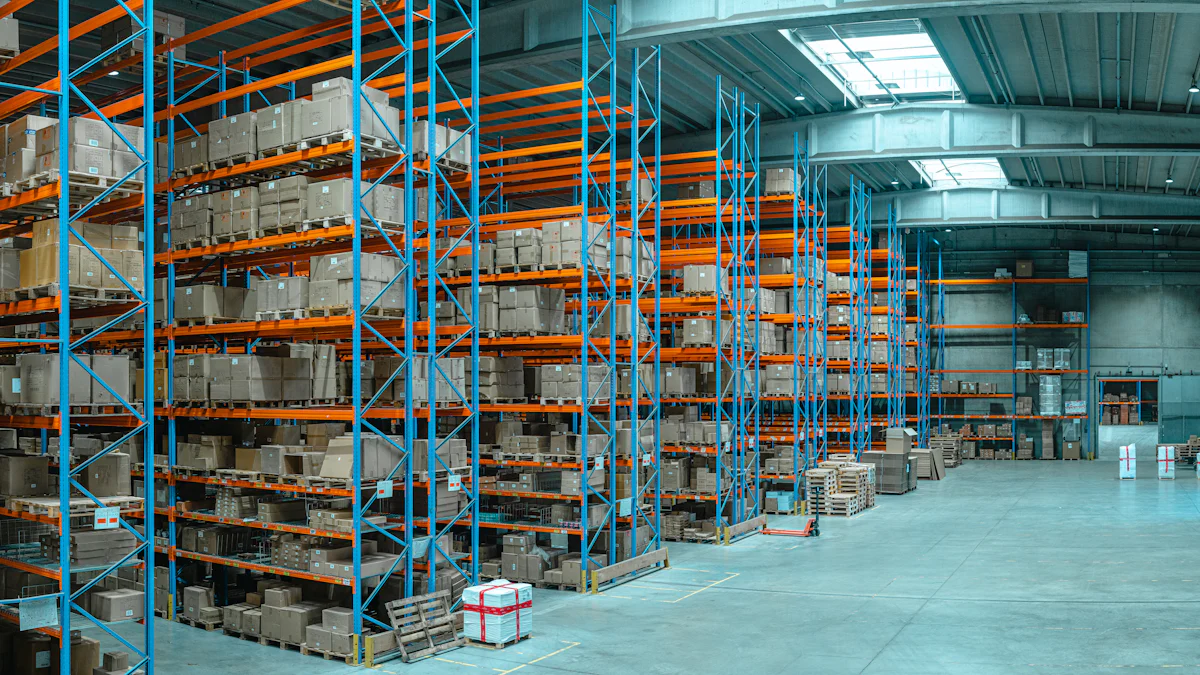Guide to Using Quick Freezing Compressor Units in Food Processing

Quick freezing plays a crucial role in food processing by preserving quality and extending shelf life. This method rapidly reduces the temperature of food, maintaining its texture and nutrients. The market for individual quick freezing is expanding, with projections reaching USD 33.92 billion by 2032. Compressor units are essential in this process, providing the necessary cooling power. The Quick Freezing Compressor Unit, with its advanced technology, ensures efficient and reliable freezing, making it indispensable in the industry.
Understanding Quick Freezing

Principles of Quick Freezing
How Quick Freezing Works
Quick freezing rapidly reduces the temperature of food items, preserving their quality and nutritional value. This process forms smaller ice crystals compared to traditional freezing methods. Smaller crystals cause less damage to cell walls, maintaining the food's texture and structure. Quick freezing tunnels prevent ice crystal formation, preserving the cellular integrity of food. This method ensures that food retains its original taste and appearance.
Advantages Over Traditional Freezing
Quick freezing offers several advantages over traditional freezing. It minimizes water loss, preserving the nutrition and texture of the product. Rapid freezing techniques, such as Individual Quick Freezing (IQF), help minimize tissue damage in frozen foods. This preservation method maintains the quality and shape of frozen products by preventing large ice crystal formation. Additionally, quick freezing delays cellular metabolic reactions, ensuring non-seasonal availability of food.
Types of Quick Freezing Methods
Blast Freezing
Blast freezing is a popular method in the food processing industry. It involves circulating cold air at high speeds around the food items. This technique rapidly reduces the temperature, ensuring even freezing throughout the product. Blast freezing maintains the nutritional value of food by preventing ice crystal formation. It is ideal for freezing large quantities of food quickly and efficiently.
Cryogenic Freezing
Cryogenic freezing uses liquid nitrogen or carbon dioxide to achieve ultra-low temperatures. This method rapidly freezes food items, preserving their quality and texture. Cryogenic freezers are highly efficient, providing consistent results. They are suitable for delicate items that require precise temperature control. This method ensures that the molecular structure of the frozen item remains intact, preventing any loss of quality.
Role of Quick Freezing Compressor Units

Functionality in Quick Freezing
Compression Process
Quick freezing relies on the efficiency of compressor units to achieve rapid temperature reduction. These units compress refrigerants, increasing their pressure and temperature. As the refrigerant expands, it absorbs heat from the food, facilitating quick freezing. This process ensures that food items freeze uniformly, preserving their quality and texture.
Types of Compressor Units
Reciprocating Compressors
Reciprocating compressors are widely used in quick freezing applications. They operate by using pistons to compress the refrigerant. This type of compressor is known for its reliability and ability to handle varying loads. It suits smaller operations where flexibility and cost-effectiveness are priorities.
Screw Compressors
Screw Compressors, such as those in the Screw Compressor Unit Series, offer advanced technology with low maintenance costs. These compressors use rotating screws to compress the refrigerant, providing continuous and efficient operation. They are ideal for large-scale quick freezing due to their high capacity and energy efficiency. The Quick Freezing Compressor Unit often incorporates screw compressors to enhance performance and reliability.
Benefits of Using Quick Freezing Compressor Units
Quality Preservation
Nutrient Retention
Quick freezing compressor units excel in preserving the nutritional value of food. By rapidly reducing the temperature, these units minimize the formation of large ice crystals, which can damage cell walls and lead to nutrient loss. This method ensures that vitamins, minerals, and other essential nutrients remain intact, providing consumers with healthier food options. The preservation of nutritional value is a significant advantage over traditional freezing methods, which often result in nutrient degradation.
Texture and Flavor Maintenance
Maintaining the texture and flavor of food is crucial in the food processing industry. Quick freezing compressor units achieve this by preventing the formation of large ice crystals that can alter the texture and taste of food products. Foods frozen using these units retain their original texture and flavor, offering consumers a product that closely resembles fresh produce. This quality preservation is particularly important for delicate items such as fruits and seafood, where texture and flavor are key selling points.
Efficiency and Cost-Effectiveness
Energy Consumption
Quick freezing compressor units are designed to operate efficiently, reducing energy consumption compared to traditional freezing methods. These units utilize advanced technology to optimize the freezing process, ensuring that energy is used effectively. The high coefficient of performance (COP) in units like the Quick Freezing Compressor Unit means that less energy is required to achieve the desired freezing temperatures. This efficiency translates into lower energy bills for businesses, making quick freezing an economically viable option.
Operational Costs
In addition to energy savings, quick freezing compressor units contribute to reduced operational costs. Their efficient design minimizes maintenance requirements, leading to fewer breakdowns and repairs. The compact structure of these units also saves space, allowing businesses to maximize their facility's layout. By lowering both energy and maintenance costs, quick freezing compressor units offer a cost-effective solution for food processors looking to enhance their operations without compromising on quality.
Challenges and Solutions
Common Issues
Equipment Maintenance
Quick freezing compressor units require regular maintenance to ensure optimal performance. Over time, components such as compressors, condensers, and evaporators may experience wear and tear. This can lead to reduced efficiency and potential breakdowns. Regular inspections and servicing help identify issues early, preventing costly repairs and downtime. Technicians should focus on cleaning coils, checking refrigerant levels, and ensuring that all moving parts are lubricated. By maintaining equipment properly, businesses can extend the lifespan of their Quick Freezing Compressor Unit and maintain consistent freezing quality.
Solutions and Best Practices
Regular Maintenance Schedules
Implementing a regular maintenance schedule is essential for the smooth operation of quick freezing compressor units. Scheduled maintenance allows technicians to perform routine checks and address minor issues before they escalate. Businesses should establish a maintenance calendar that includes tasks such as cleaning, lubrication, and component inspections. By adhering to a structured maintenance plan, companies can minimize unexpected breakdowns and ensure that their Quick Freezing Compressor Unit remains in peak condition.
Advanced Monitoring Systems
Advanced monitoring systems offer a proactive approach to managing quick freezing compressor units. These systems provide real-time data on the unit's performance, allowing operators to detect anomalies early. Sensors and software can monitor temperature fluctuations, pressure levels, and refrigerant flow. By analyzing this data, businesses can make informed decisions about maintenance and repairs. Implementing advanced monitoring systems enhances the reliability of the Quick Freezing Compressor Unit, ensuring consistent product quality and operational efficiency.
Quick freezing compressor units offer significant benefits in food processing. They preserve nutritional value, maintain texture, and reduce energy consumption. These units ensure efficient operations and cost-effectiveness, making them essential in the industry.
Looking ahead, advancements in quick freezing technology will likely focus on enhancing efficiency and sustainability. Innovations may include more environmentally friendly refrigerants and smarter monitoring systems. As the demand for high-quality frozen foods grows, quick freezing technology will continue to evolve, offering even greater advantages over traditional methods.
See Also
Revolutionizing the Food Sector with Rapid Freezing Tunnels
Overcoming Freezing Challenges with Tunnel Freezer Innovation
Enhancing ARKREF CO₂ Transcritical Refrigeration Unit Efficiency
Cost-Effective Implementation of ARKREF CO₂ Refrigeration System
Optimizing Energy Usage with ARKREF CO₂ Refrigeration System

